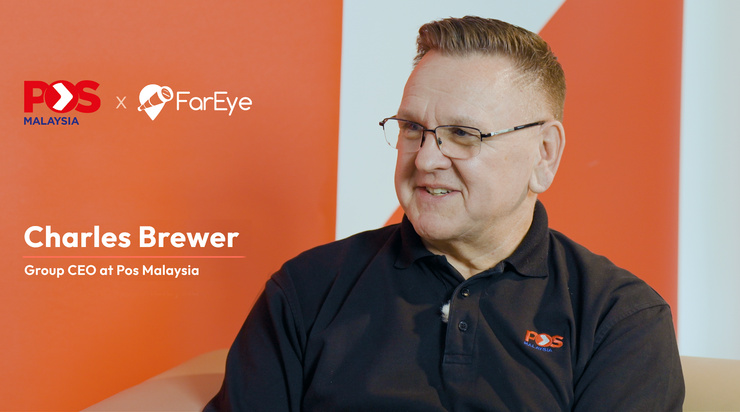- E-commerce
Improving First-Attempt Delivery Rates with Advanced Delivery Management Solutions
Table of Contents

Improving first attempt delivery rates (FADR) is crucial for logistics companies to enhance the customer satisfaction and efficiency. As e-commerce grows, successful deliveries have become a key metric. High first attempt delivery success (FADS) helps reduce costs from redeliveries and build customer loyalty. Failed deliveries can harm the trust and result in lost sales. Advanced delivery management solutions such as GPS tracking, route optimization and customer communication tools help streamline the operations and meet the delivery expectations. By adopting these technologies, businesses can provide a more reliable delivery experience, improve their profits and meet the rising customer expectations.
Benefits of First Attempt Delivery Success for Businesses
Achieving first attempt delivery success is a game changer for businesses. It helps enhance customer satisfaction and reduce the operational costs. Let’s explore some key benefits in detail:
Cost savings: Achieving high FADR helps reduce the operational costs for businesses. It cuts extra expenses like fuel and labor required for redeliveries. Each failed attempt adds costs similar to multiple deliveries along with the hassle of rescheduling and customer communication. Reducing these expenses improves the profit margins and helps allocate resources more effectively, enhancing the overall financial health.
Improved customer satisfaction: Successful first attempt deliveries lead to higher customer satisfaction. When customers receive their orders on time without problems, they tend to have a positive experience with the brand. This satisfaction builds loyalty and gets repeat business. Studies show that up to 20% of all deliveries fail on the first attempt. Delivery failure reduction can increase repeat business and positive feedback which are both important for long term success.
Enhanced brand reputation: A high track record of successful first deliveries enhances a brand's market reputation. Customers link fast and reliable delivery with quality service. A good brand image sets the business apart from the competitors and attracts new customers. As the demand for quick and accurate deliveries grows, the businesses with better FADR gain a competitive advantage.
Operational efficiency: Businesses that optimize their delivery processes using route optimization software and real time tracking can improve operations, reduce errors and enhance customer satisfaction. Advanced delivery management systems not only speed up deliveries but also reduce the need for extensive warehousing and inventory management which contributes to cost savings.
Reduced customer inquiries: When businesses successfully deliver on the first attempt it reduces the customer inquiries about missed or delayed deliveries. This decrease in WISMO calls lets the teams focus on more strategic tasks instead of managing complaints or rescheduling deliveries. Delivery failure reduction also contributes towards improved operational efficiency and enhances customer experience.
Increased customer retention: Customers who experience successful first attempt deliveries are more likely to return for repeat purchases. A smooth delivery builds trust and loyalty that are crucial in today's competitive e-commerce landscape. Retaining the customers is usually cheaper than acquiring new ones. Improving FADR can drive long term growth as loyal customers continue to engage with the brand.
Challenges in Achieving First Attempt Delivery Success
Successful first attempt deliveries are critical for e-commerce and logistics companies but they aren’t as easy as they sound. Below are the key challenges that businesses should keep in mind:
Inaccurate address information: One of the main reasons for failed first attempt deliveries is inaccurate or incomplete addresses. Studies show that over 50% of the failed deliveries are caused by incorrect addresses, missing contact details or unclear instructions. When delivery staff face such issues it makes it difficult to find the recipient's location and results in failed attempts. This frustrates the customers and increases the costs for the businesses.
Customer unavailability: Another major challenge is the unavailability of customers at the time of delivery. This issue is worse in urban areas where people often work for long hours or have uncertain schedules. When the delivery staff cannot reach the recipients, they leave notes or return the items to warehouses. This can result in customer dissatisfaction and increase operational costs.
Complex access requirements: In urban areas, many people live in gated or secured societies that have specific access requirements which can delay deliveries. Delivery agents might need entry pass or have to contact the residents for entry. Without this information available with the delivery staff, there can be delays or failed deliveries. This lack of clarity frustrates both the delivery staff and the customers waiting for their packages.
Traffic challenges: Traffic and unexpected road closures create logistical challenges that can delay deliveries. Manual routing systems don't consider real time traffic or other factors such as weather that leads to inefficient route planning and longer delivery times. Even when a delivery agent reaches the correct address, they may still miss the customer due to these delays.
Lack of communication: Clear communication between the delivery companies and the customers is crucial for first attempt delivery success. Poor communication can cause confusion about the delivery times or expectations. If the customers aren't updated on their delivery status or don't get timely notifications about delays, they may get anxious or make inquiries about their orders. This lack of communication can increase the chances of failed deliveries.
Limited flexibility in delivery options: Many logistics companies find it challenging to provide flexible delivery options that meet the customer preferences. Customers now expect to reschedule deliveries or choose the specific time slots that fit their schedules. When businesses can't meet these requests, it leads to more missed deliveries and customer frustration.
Legacy systems and processes: Many businesses still use outdated systems for routing and tracking deliveries. These legacy systems often cannot adapt to real time changes or customer needs. They may create inefficiencies that lead to missed or failed deliveries. Modern technology such as first time delivery software is now important to enhance operational efficiency.
How Advanced Delivery Management Solutions Improve First Attempt Delivery Rates
Advanced delivery management solutions use various technologies to enhance the efficiency and success rate of first attempt deliveries. Key components include the following:
Route optimization: Route optimization is essential for finding the most efficient delivery routes. It involves analyzing factors such as traffic patterns, distances and delivery windows to plan the optimal routes. Advanced algorithms can help adjust these routes using real time data, ensuring timely and cost effective deliveries by reducing fuel consumption and travel time.
Real time communication: Real time communication between drivers and the dispatchers enhances delivery outcomes. Using mobile apps and telematics systems, the logistics managers can quickly share updated instructions and receive immediate feedback from the drivers. This connectivity enables live route adjustments based on current conditions to improve the overall operational efficiency and first attempt delivery rates.
Resource utilization: Effective use of resources requires effective fleet management based on demand predictions. AI driven systems analyze the order volume patterns to ensure efficient resource allocation which helps reduce idle time and operational costs while increasing the productivity.
Multi stop route planning: Efficiently managing multi stop routes is essential for first attempt delivery success. Advanced routing solutions can assess multiple factors such as stop priorities, vehicle capacities and time to plan the most efficient routes including multiple stops. This reduces the travel time and fuel use. It also ensures on-time successful deliveries.
Geofencing and geocoding: Intelligent geofencing enables businesses to create virtual boundaries around specific delivery zones. Alerts can be triggered to notify when the delivery vehicles enter or exit these areas, helping to keep deliveries on track. ML based geocoding improves the accuracy in locating addresses. It increases optimized delivery success rates by reducing the errors linked to incorrect locations.
Enhanced customer experience: Good customer experience requires transparency and communication. When the customers get real time updates on their deliveries, it increases trust and reduces anxiety. Data analytics can be used to offer flexible delivery options based on customer preferences, ensuring higher FADR.
How FarEye Helped Blue Dart Increase Their First Attempt Delivery Success Rates by 22%
FarEye helped South Asia's leading express air, integrated transportation and distribution company—Blue Dart improve its delivery operations and increase the first attempt delivery success rates by 22%. FarEye's platform also improved their operational efficiency by 30% and reduced the delivery costs by 15%. Advanced features such as real time tracking, predictive analytics and route optimization have helped Blue Dart streamline logistics. FarEye also helped them reduce missed deliveries by 40%, which increased customer satisfaction and reduced the carbon footprint from repeated attempts.
Conclusion
Improving first attempt delivery success rates is important for businesses looking to enhance the customer satisfaction and operational efficiency. Delivering packages successfully on first attempt has become a KPI metric. High FADR lower the costs related to redeliveries such as fuel and labor. It also helps build customer trust and loyalty. Studies show that failed deliveries can lead to lost sales. Advanced delivery management solutions help businesses streamline operations and meet the delivery expectations. By adopting these technologies and practices, businesses can improve their sales and ensure a good customer experience.

Komal Puri is a seasoned professional in the logistics and supply chain industry. As the AVP of Marketing and a subject matter expert at FarEye, she has been instrumental in shaping the industry narrative for the past decade. Her expertise and insights have earned her numerous awards and recognition. Komal’s writings reflect her deep understanding of the industry, offering valuable insights and thought leadership.
Let's Talk to Our Experts and Optimize Your Deliveries Today!
An expert from our team will reach out within 24 hours
Related resources


